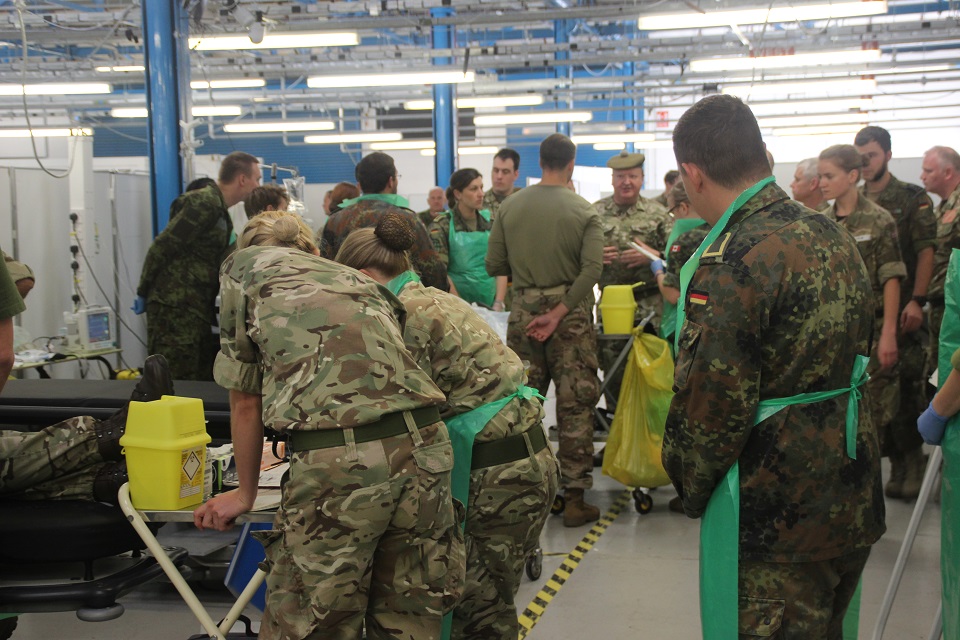The Defence and Security Accelerator (DASA) are scoping the potential for an innovation competition addressing injury prevention in the British Army by means of wearable technology. We would like to engage the market to explore market interest and to aid the scope and design of a potential future competition in advance of launch. This will provide us with an understanding of what already exists for injury prevention that can be adapted for military use as well as truly novel solutions.
Background
A study in December 2017 showed that 19.8% of personnel were medically downgraded. Of the physical injuries represented in this figure the most common were musculoskeletal injury (MSKI), environmental injury (from heat and cold) and noise induced hearing loss (NIHL). As with any organisation requiring a physical presence there is an irreducible minimum. The best sports teams work with a 7 to 12% margin for all illnesses and this accords with Commander Field Army’s target of 90% deployability. In addition to the human cost behind these figures the rehabilitation of manpower capability accounts for over £100 million per annum.
The British Army is seeking rapid innovations to improve the deployability and overall health of service personnel through the use of data science and technology. The aspiration is to employ practical sensors (wearable technology) that will provide indicators and warnings prior to injury; to allow for early intervention and prevention of injuries.
The three focus areas for this market exploration are:
-
MSKI prevention: MSKI is recognised as the leading cause of medical discharge in the British Army. The study showed that 61% of the Army’s non deployable personnel were as a result of MSKI, of which the average soldier took 9.5 months to fully recover
- environmental injury prevention: heat and non-freezing cold injuries (NFCI) accounted for 2.5% of downgraded service personnel
-
NIHL prevention: 5% of service personnel downgraded were due to NIHL, an increase on the previous year
All three areas are significantly impacting the operational effectiveness of the British Army notwithstanding the personal impact on our personnel.
What we want
We are interested in potential solutions that utilise science and technology as a means to prevent, not treat, injury in service personnel. We are looking for novel methods to provide early warning or prevention methods for physical injury, specifically using practical wearable technology.
We are also interested in ideas involving novel approaches to the data management and subsequent identification of issues using existing technology.
In the long term any technology must be scalable across the whole force, and should be compatible with the realities of military usage, such as robustness, and cyber security.
We are interested in potential solutions that aim to address any or all of the areas at any level of maturity, particularly those that are at a higher technology level which could be trialled within 6 months. Potential solutions should be presented by teams with the experience and knowledge necessary to establish sound scientific evidence for any potential technology.
By completing the Capability Submission Form neither the Government nor yourselves are committing to anything, but your submissions will be used to help focus the direction of the work and the requirements for a possible themed call in this area in the future.
What we do not want
We are not interested in literature reviews, paper-based studies, preventative medicine, non-technical solutions or marginal improvements to existing capabilities.
We are not interested in static scanning technologies or invasive technologies.
We are not interested in any novel theories for biomarkers or proxies for emerging issues which do not have a sound established scientific basis in the literature.
Complete the attached short form
Capability Submission Form for Wearable Technology
(ODT, 867KB)
, noting the word limits, and then email it to accelerator@dstl.gov.uk by midday 19 October 2018.
Please only provide details of one product or capability per form. If you have a number of potential solutions then please submit multiple forms.
If you have any questions then please email accelerator@dstl.gov.uk with Wearable Technology in the subject line.
Information you provide to us in a capability submission form, that is not already available to us from other sources, will be handled in-confidence. By submitting a capability submission form you are giving us permission to keep and use the information for our internal purposes, and to provide the information onwards, in-confidence, within UK Government. DASA will not use or disclose the information for any other purpose, without first requesting permission to do so.

